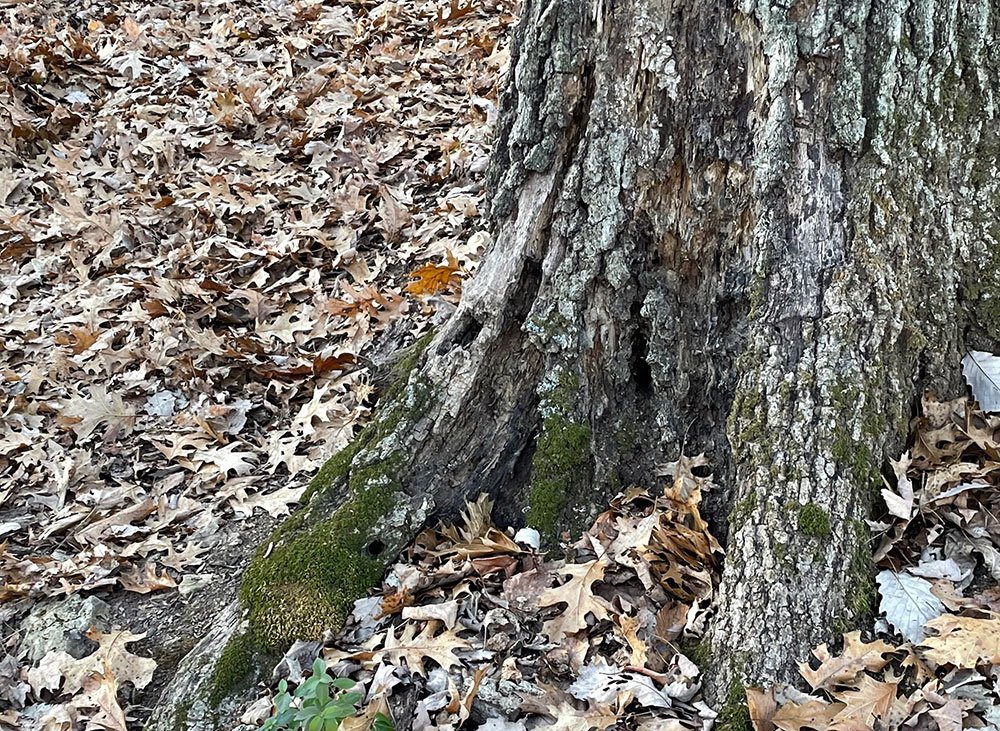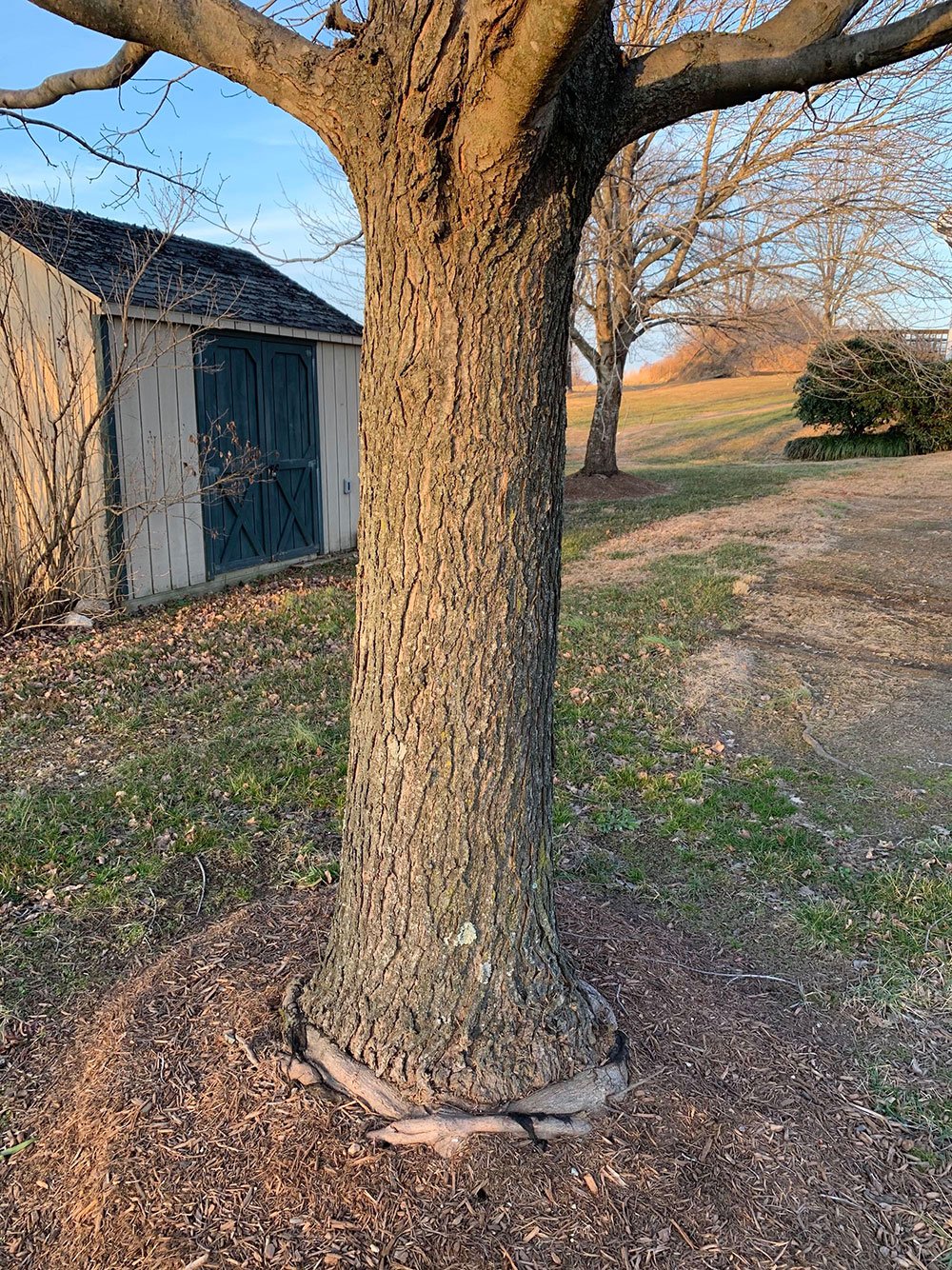Signs of a Failing Tree
How to Look for a Failing Tree
Evaluating Your Tree for Weaknesses
Periodically inspecting the trees in your yard can reduce risks associated with weak or unhealthy trees. There are several signs that indicate a tree is stressed or vulnerable, including the growth pattern of the tree, the color and number of leaves, the condition of the trunk and roots, and fungal growth on or around the tree. When you’re able to recognize the early signs of a problem, you’ll be able to contact a certified arborist in time to either save your tree or protect your home or other structures from the risk of a falling tree or large limb.
Loss of bark and decay can indicate a serious problem with the health of a tree.
Warning Signs
Before a tree produces leaves in spring, you have a clear view to inspect the trunk and branches. Spend some time in your yard taking a close look at each of your trees to see if they have any of these problems:
Weak structure or branching pattern – Poor tree architecture, including trees with unbalanced shapes or multiple trunks, can present risks. An arborist can offer advice on whether your tree falls into this category.
Dropping branches or loss of bark – A fungal infection is often the cause of a tree starting to lose branches and bark; however, other diseases, pest infestation or old age can also be responsible.
Holes or cavities in the trunk – Boring from pests or woodpeckers can injure a tree and prevent nutrients from being transported through the trunk to the crown. These open wounds are attractive to insects, which keep the birds coming back. Extensive damage will weaken and may kill a tree.
Sap leakage – When sap is coming out of a tree, it’s a wounding response that frequently is caused by a boring insect infestation. A certified arborist will be able to assess the whole tree’s condition and treat it as necessary.
Bulging growth on the trunk – Excess wood growth is another way trees try to heal themselves when wounded, and a bulging growth on the side of a tree is a sign that it is potentially fighting off an infection, like internal rot or fungus.
Fungal growth – A tree can suffer from a fungal infection anywhere on its body, which can result in leaf discoloration or spottiness, loss of leaves or bark, knotting on the trunk, or sap leakage. A sudden growth of mushrooms around the base of a tree may be a sign that the roots are decaying. A tree expert will be able to assess and diagnose the issue, then advise on the best course of action.
Severe root girdling at the base of a tree.
Once your tree is in full leaf later in the spring, inspect it once again for these signs:
Unseasonal changes in leaf color or vibrance – Yellowing, spotting or browning of leaves can be due to various factors, including acidic soil, dehydration, overwatering or infection. If the leaves of your tree are changing color, wilting or dropping in spring or summer, you should contact a professional arborist to assess the tree.
Dieback or loss of foliage at the crown – If the crown, or top, of your tree does not produce leaves in the spring, it could be a sign of a serious problem, from a fungal infection to girdling roots around the trunk, which cut off the flow of nutrients.
Multiple trunks like these create a structurally weak growth pattern.
Monitoring for Risks
When you have a local arborist perform routine maintenance on your tree, they will look out for these warning signs. In between appointments, you can keep an eye on your tree as you maintain your yard and check in with them if you notice any of the symptoms of poor tree health.
To stay updated with tree care tips and news about Nashville’s urban canopy, subscribe to our newsletter!



